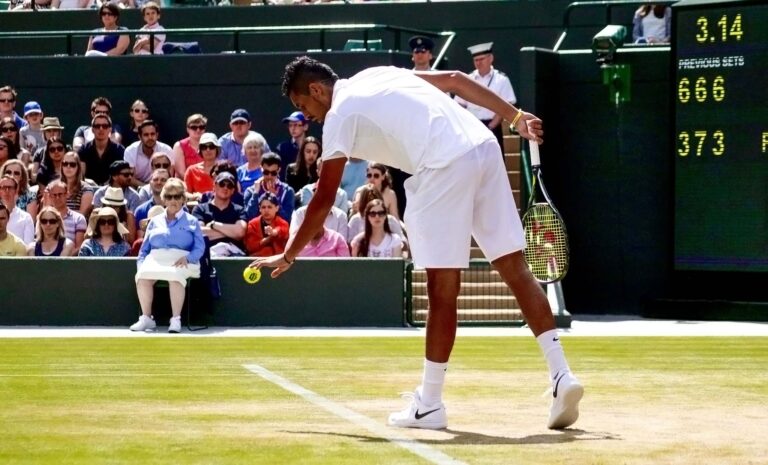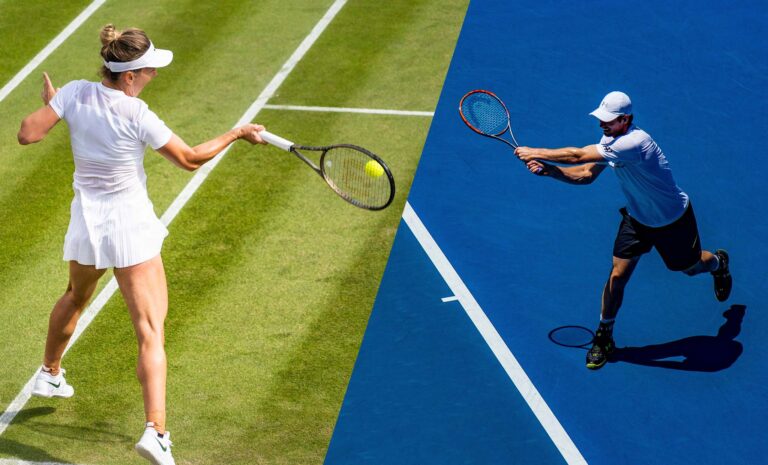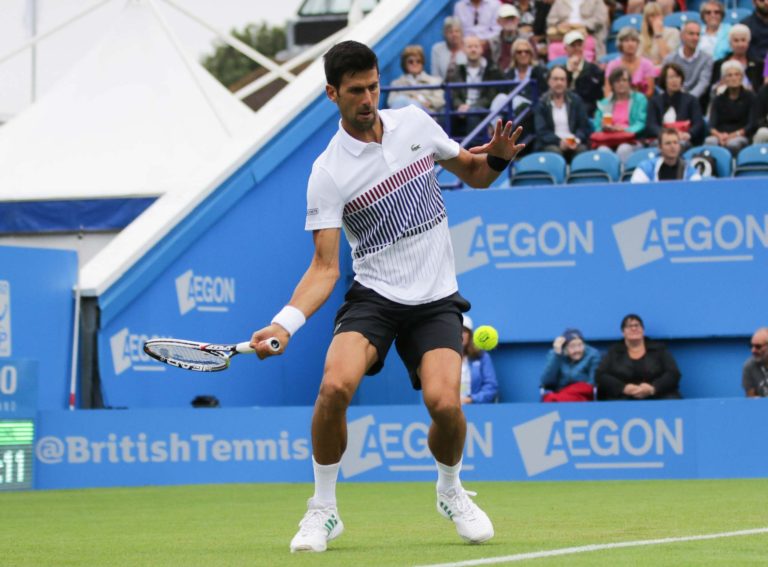Over the last few decades, tennis has moved away from the more traditional serve and volley style of play and transitioned into more of a heavy hitting baseline game, which has forced tennis grips to become more and more extreme. That led to the development of the western forehand grip.
The western forehand grip, which is sometimes called a full-western grip, is an extreme tennis grip that naturally generates massive amounts of topspin. It works great for baseline players and allows them to hit more powerful shots while still being able to keep the ball in the court.
How To Hold A Western Forehand Grip
Most players will find a full-western grip to be rather awkward and uncomfortable to play with because of how extreme it is. However, it’s becoming very popular with up-and-coming junior players and can be a great option if used correctly.
If you look at the racket butt cap, you’ll notice that the grip forms an octagonal shape with eight sides or “bevels”. To hold a western forehand grip, you’ll want to place the palm side knuckle of your index finger on the fifth bevel, which in a way is at the bottom of the grip. It should look something like this:
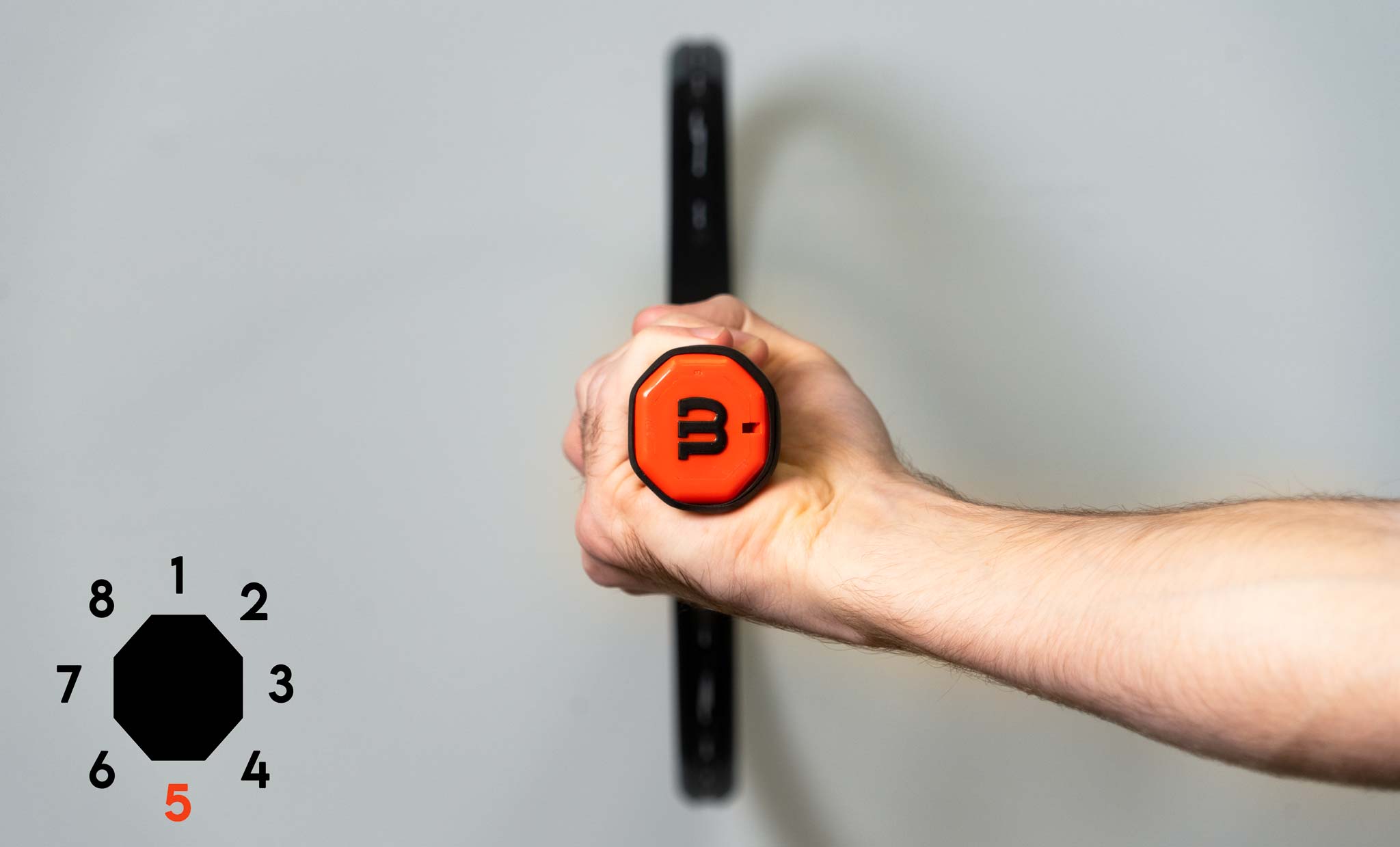
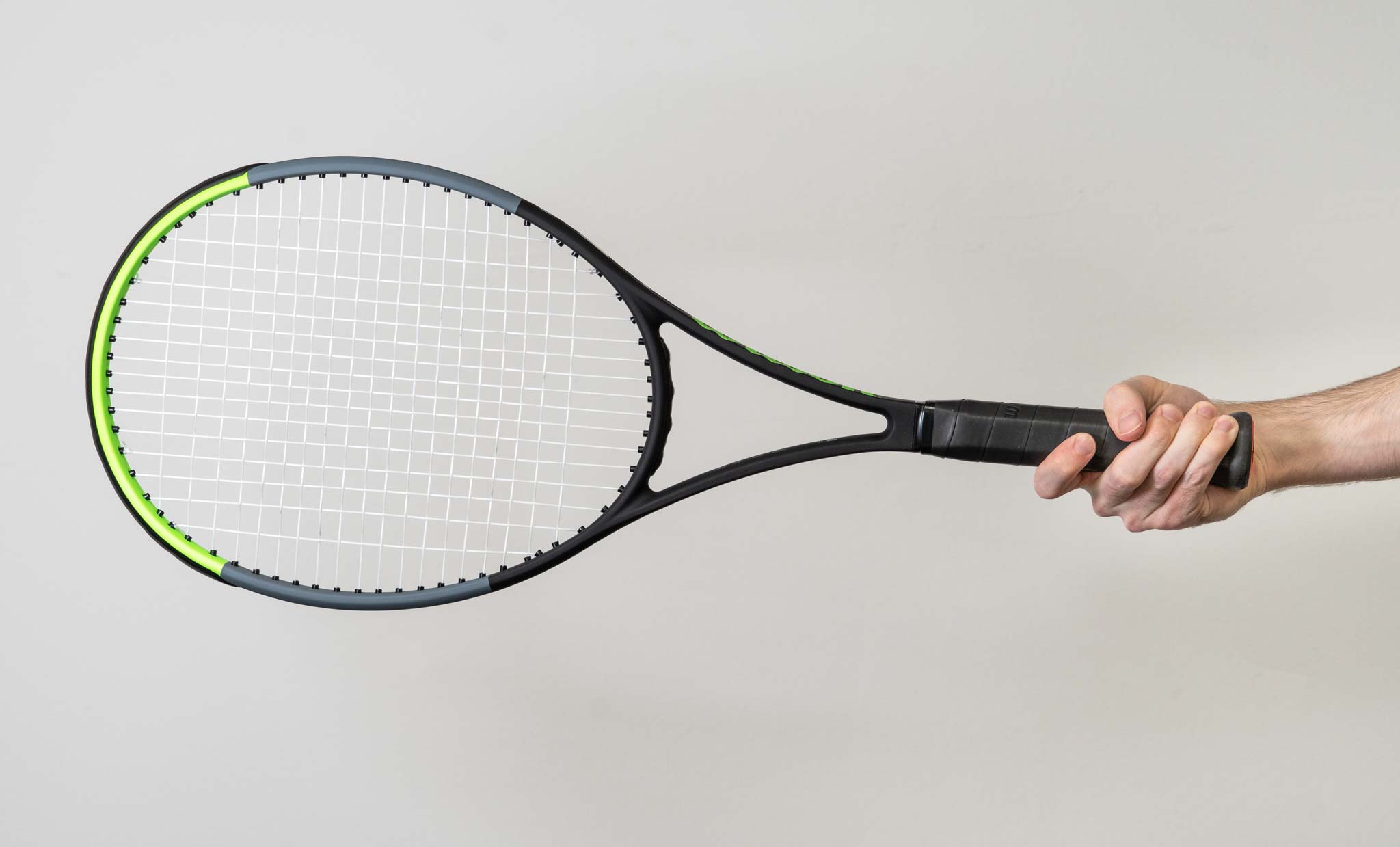

Advantages of a Western Grip
There are a few benefits to using a western forehand grip, particular in modern tennis.
There’s no doubt that the biggest advantage is the easy access to topspin. Thanks to the relatively “closed” racket face at contact, it’s much easier to generate large amounts of heavy topspin than with other grips. That allows players to hit higher over the net and a lot harder without worrying about the ball sailing past the baseline.
That extra topspin also adds a lot of weight to groundstrokes as the “dip” on the ball really makes the ball jump up after the bounce, which can be very difficult to deal with. It will often force the opponent out of their comfort zone, making them either step into the ball and take it on the rise or push them way back behind the baseline.
And thanks to the naturally closed racquet face on contact, dealing with higher bouncing balls is a little easier. That’s particularly beneficial on clay courts and higher bouncing courts.
Disadvantages of a Western Grip
Of course, such an extreme grip also comes with a few drawbacks.
While dealing with higher bouncing balls might be easier, low bouncing balls will be more awkward to hit as the racket face naturally faces towards the ground on contact. That can be a particularly big problem on surfaces with a low bounce, such as grass (or astro-turf courts at an amateur level) or against players who like to keep the ball low with a backhand slice.
It will also come as no surprise that flattening groundstrokes will be more difficult, making it more difficult to hit a winning shot from the baseline.
It’s worth keeping in mind that it can also be more difficult to switch between a western grip and a continental grip (used for volleys and slice shots) as the “distance” between the two grips is larger. That being said, most players get used to switching grips as their level advances.
There is also an increased risk on injury. It can be a very awkward grip to use and, if used wrong, the western grip can put more strain on the wrist and forearm and can cause injuries to the ulnar areas of the wrist.
Which Players Use a Western Forehand Grip?
Since the Western forehand grip is relatively modern in the world of tennis, there are actually very few players who use it on the pro tour. That being said, it’s used by some of the best players in the game, including the likes of Kei Nishikori, Karen Khachanov, Kyle Edmund and Jack Sock, to name a few.
There are also a number of players, like Nick Kyrgios for example, who use extreme variations of the semi-western grip and are so close to a full western that they are often mistaken.
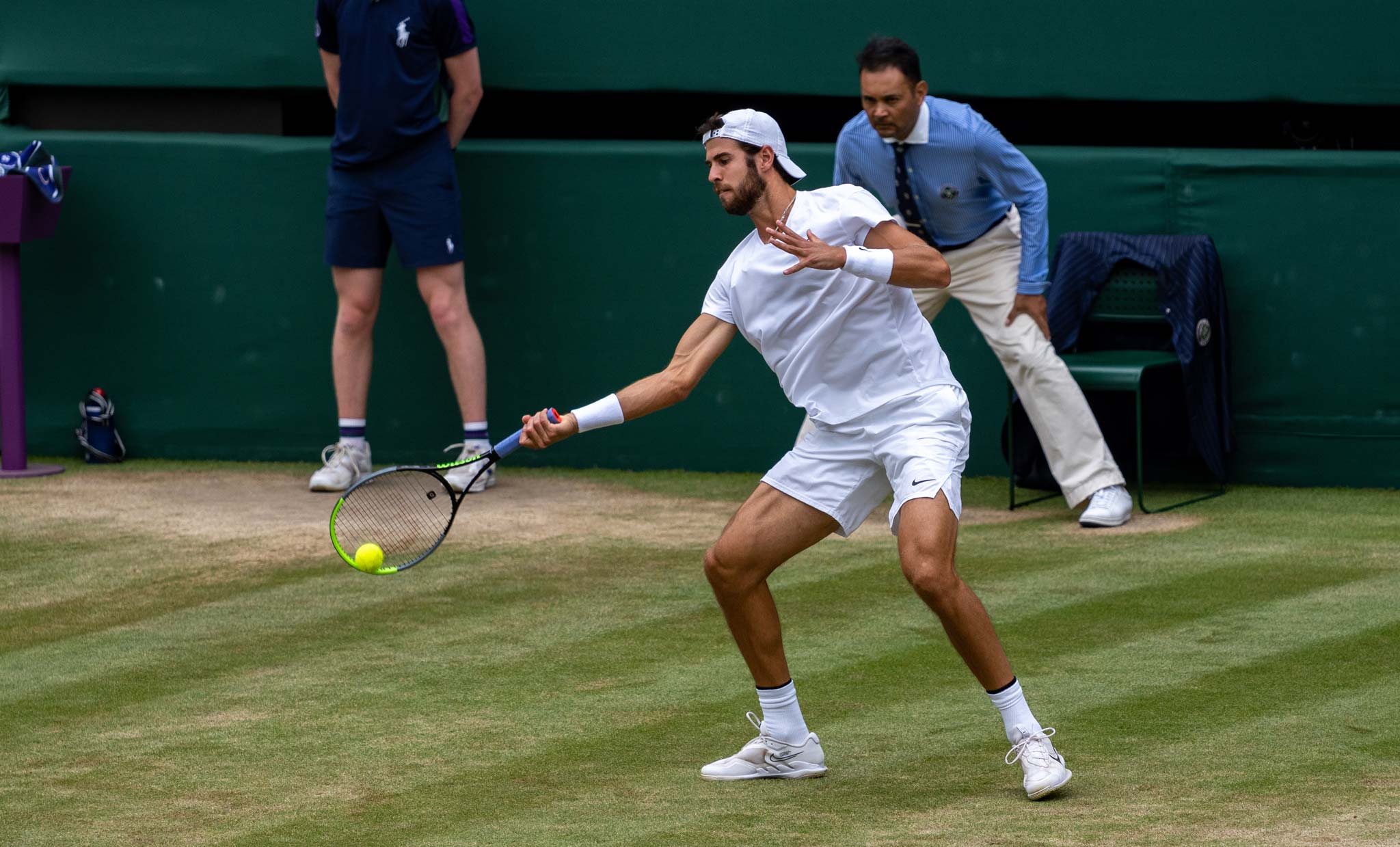
Should I Use a Western Forehand Grip?
When it comes to choosing a tennis grip, there’s really no wrong answer as every player is different. However, the Western grip is a relatively advanced grip and can cause injuries if used wrong, so we wouldn’t recommend using a western forehand grip at a beginner level.
That being said, it can be very useful for up-and-coming junior players looking to develop a solid-baseline game in modern tennis. In that case, we’d suggest starting out with an eastern forehand grip or semi-western grip which are much easier to use at the beginning, before gradually twisting the grip until you reach a full-western grip.
Photo credit: Raph_PH / Flickr

